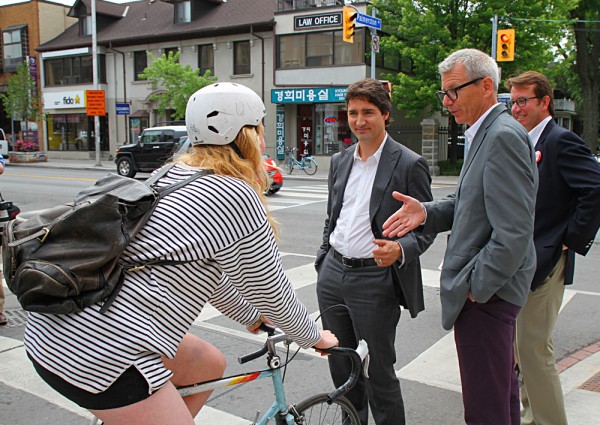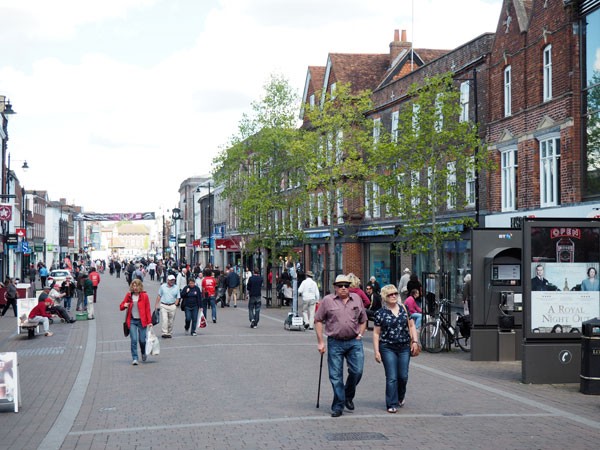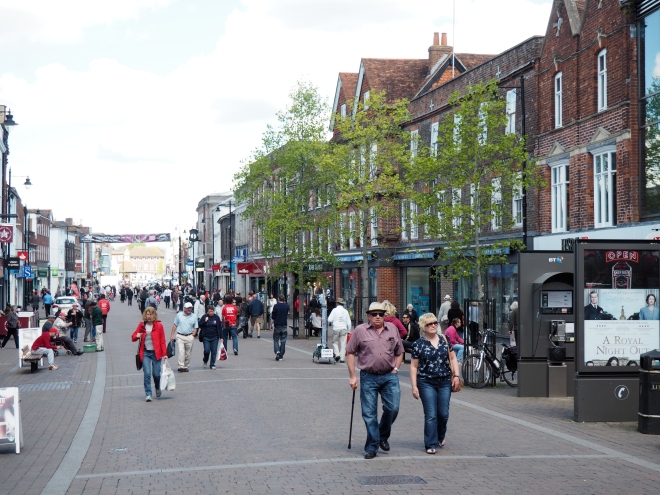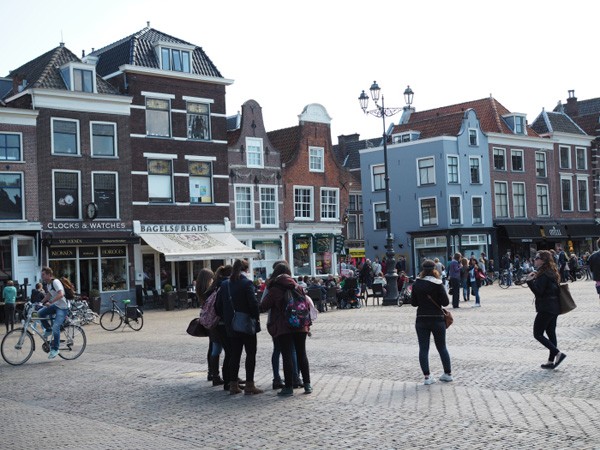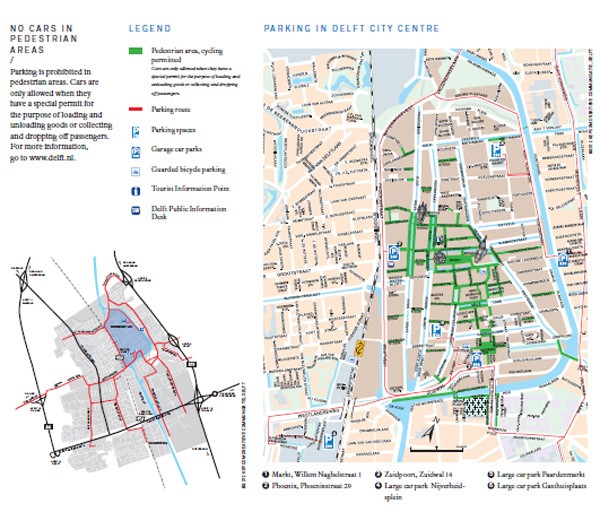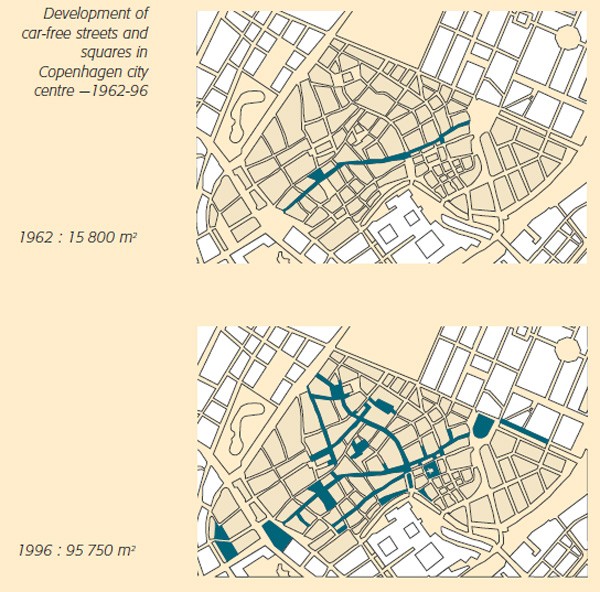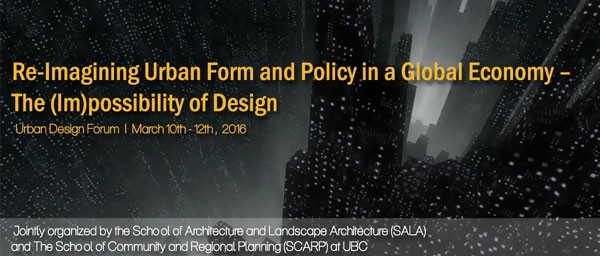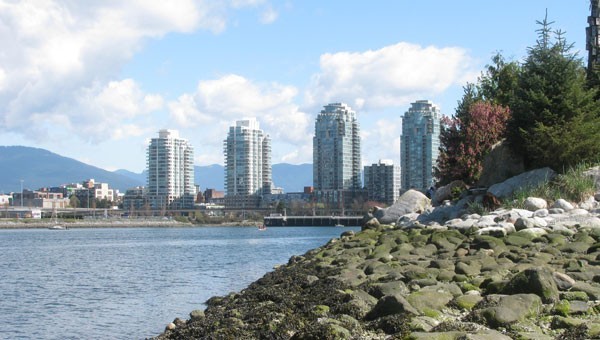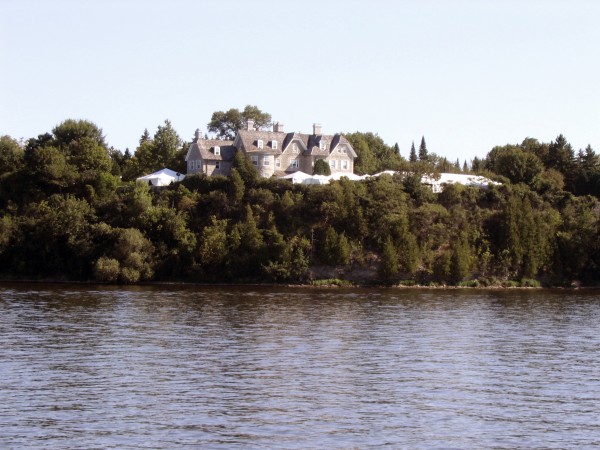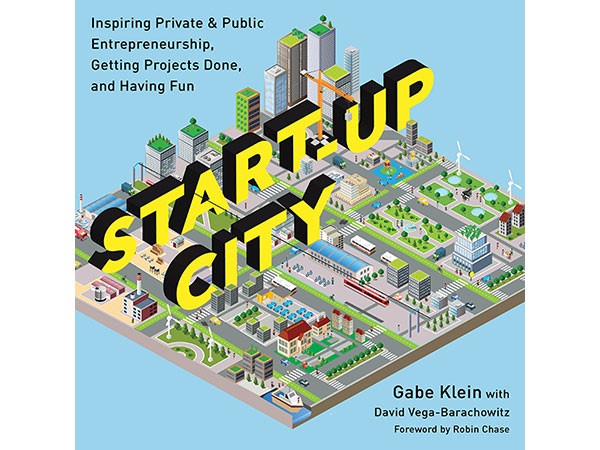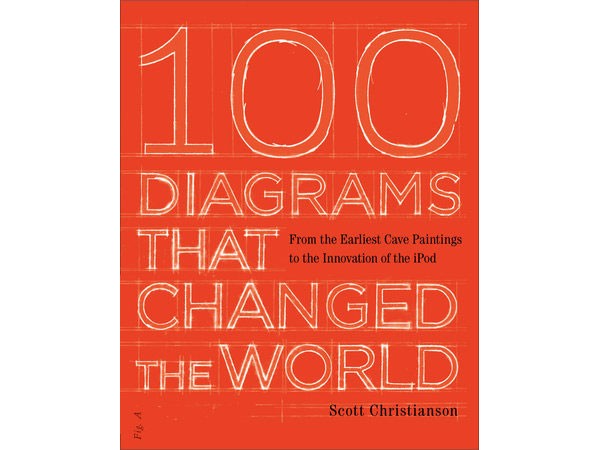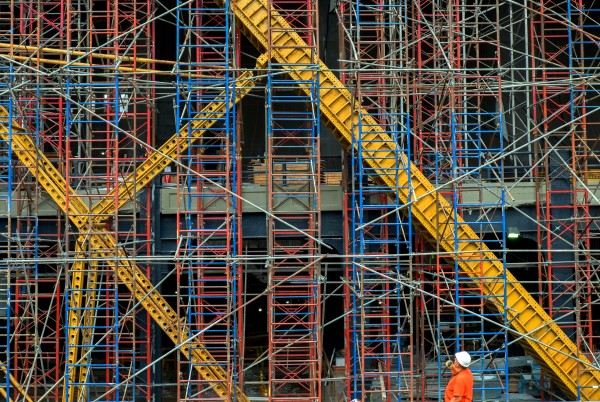![24sussex-sookie]()
Much has recently been discussed about the restoration or demolition and replacement of 24 Sussex Drive in Ottawa. Like many old buildings, this house has asbestos, leaky windows, and a terrifying electrical system, all housed in what is perceived to be a dowdy building.
A series of criticisms have been posed about the building. The building is in dire need of basic repairs and upgrades. It does not programmatically function well for the purpose it serves, being the residence for the prime minister and their family, and for their hosting of functions in that space. It is an inefficient building, but that site could be a model for sustainability. The architecture does not represent the best of current Canadian architecture, nor does it necessarily reflect anything interesting about Canada’s culture. And perhaps most publicly damning in a national capital rife with public buildings of internationally renowned picturesque architectural exuberance, the architectural expression of 24 Sussex is mind-numbingly dull.
Generally one could also ask whether 24 Sussex is the right building, the right size, shape, and programmatic flow. Examining the site in comparison with two of its neighbours – the French Embassy, and Rideau Hall — it is clear that the scale of 24 Sussex is diminutive for the roles it has the opportunity to play.
Functionally, the property needs to serve a number of purposes. It is the private house of the prime minister and their family within a secured perimeter. It is used for more intimately scaled state events hosted by the prime minister. And it could speak to the country’s identity to international visitors.
The prime minister’s office and those of Cabinet are housed in Langevin Block and Centre Block, removing that burden from the residence. Official events are shared by the Governor General’s residence Rideau Hall, Parliament Hill, and 24 Sussex, with the majority of ceremonial events being hosted at Rideau Hall across the street from 24 Sussex. Citizenship ceremonies, state dinners and swearing-in of new ministry occurs at the Governor General’s residence, as is the custom. But is it appropriate that official events of a modern Canadian government be still hosted in the vice regal building of Rideau Hall, representing the Queen’s residence in Canada, or would some of these be more suited to being hosted in 24 Sussex?
Rideau Hall is historic and palatial, but its site is public and the character of the building is one of a stately monument. While the site of 24 Sussex is not enormous, there is opportunity to enlarge the building and perhaps better separate the public and private functions inherent in what has to be a home as well as perhaps a more relaxed gathering space than Rideau Hall. The size worked well enough this spring for the friendly meeting between the Prime Minister and the Aga Khan during his last visit to Ottawa, but events for even 20 people are said to be cramped; it is likely that the building could stand a substantial reworking of spaces and an addition.
What other countries have done
Internationally, there are no hard and fast rules of what a prime minister’s official residence should encompass or what scale it should occupy.
Sweden recently purchased Sager Palace in 1988, before which there was no official residence for the head of government. Australia’s “the Lodge” was a purpose built prime minister’s residence, built in 1926-27 as a temporary measure “until such time as a monumental prime minister’s residence is constructed, and thereafter to be used for other purposes.” Denmark’s “Marienborg” was only acquired in 1962, and the historic palace similarly performs as a residence (primarily a summer residence), separated from the prime minister’s office at Christianborg Palace. Following the revolution, Cuba turned their existing monumental presidential palace into the Museo de la Revolución, while the Castros occupied a number of the mansions left behind when wealthy Cubans left the country.
The US recently upgraded the historic White House for $376 million and Turkey recently built a new faux-historic presidential palace for $350 million. Like most of Central and South America, Mexico’s “Los Pinos” is a historic palace reflective of their colonial wealth. But Oscar Niemeyer’s 1957 Palácio da Alvorada embodied mid-century modernity and was the first government structure built in Brazil’s new national capital. Japan on the other hand demolished their previous residence and constructed a new building in 2002, housing the residence, their offices and entertainment facilities.
And many are adapted residences like 24 Sussex. In the UK, 10 Downing Street is an assemblage of three ancient houses with an understated street presence, comprising 100 rooms serving as the office and residence of the Prime Minister of the United Kingdom. Norway’s Inkognitogata 18 was completed in 2008, incorporating multiple historic buildings and new architecture, additionally housing government offices and an official residence for visiting dignitaries.
Buildings can be repaired, asbestos removed, and tangles of electrical cords replaced. And buildings can be altered to become an appropriate expression of the face we want to show as a nation, and the role we need them to play. But does this building bring anything to the table to contribute to a great work of architecture or should it be replaced?
24 Sussex at a glance
Within all of the disrepair and blandness, 24 Sussex is a massive stone cliff-top house whose material architecture is deeply rooted in the formation of Canada and the establishment of Ottawa. Its masonry, while altered in places, is of a fine level of skill and was a great feat for the late 1860’s, representing an enormous amount of embodied energy of the work of early craftsmen. The rock-faced and dressed ashlar Gloucester limestone of this building is linked to the tremendous feat of building Parliament hill, creating the Rideau Canal and transforming the civic identity of scrappy Bytown into a regal and permanent national capital. 24 Sussex, along with its neighbour Earnscliffe, residence of the British High Commissioner, is one of a small handful of residential buildings that remain to represent this founding effort to build a world capital of substance at the time of confederation. The fact that one of these buildings houses the Prime Minister is significant.
Carolyn Young’s book “The Glory of Ottawa” examined the design competition of 1858 which produced this muscular gothic parliamentary complex, and which set the course for Canadian federal architecture. That year Queen Victoria had chosen the recently renamed Ottawa to be the capital of the Provinces of Canada and the small northern town had to be rebranded. Responding to their site perched high above a rapid strewn stretch of the Ottawa River, Fuller and Jones’ original centre block (of which only the Library of Parliament remains), and Stent and Laver’s West and East Blocks represent the embodiment of Ruskin’s Seven Lamps of Architecture, in which he struggled with the challenge of developing an appropriate architecture for a “northern people”, rooted in northwestern European architectural history.
The modernity and international success of this complex in a backwater like Canada was unprecedented. Its success set a path for architecture in the capital, with most major public buildings associated with federal use or near the parliamentary precinct choosing to respond to this complex in a picturesque and/or gothic architectural form. The gothic would be particularly amplified in the later architecture of the Chateau Laurier, the Confederation Building, and even in Moshe Safdie’s National Gallery, and the picturesque in many works of urban design carrying through to Douglas Cardinal’s Museum of Civilization.
In 1867 its time of construction, “Gorffwysfa” (the original name for 24 Sussex, translated from Welsh as “Place of Peace” or “Resting Place”) shared a similar design language to the beautiful adjacent Earnscliffe house. Both were picturesque buildings, asymmetrical and varied, using fine stonework to great advantage and responding beautifully to their dramatic sites, similar to that of Parliament Hill. 24 Sussex had been built for Joseph Merrill Currier, a wealthy lumber baron who later owned the Ottawa Daily Citizen and who represented Ottawa in the federal house for many years, and later owners carried on these themes of lumber families and political office. Following a renovation in 1907-1909 (concurrent with the construction of the Grand Trunk Railway’s Chateau Laurier Hotel in Ottawa adjacent to Parliament Hill) the picturesque qualities were augmented by the addition of a circular tower with conical roof, a porte-cochere and a third floor oriel window, resulting in a perhaps slightly messy but enthusiastic eclectic architecture that responded to its setting. 24 Sussex in its early form is at the root of this national capital’s design typology.
The building was expropriated in 1943 after a significant fight to wrestle it away from the Edwards family who loved the house and were not ready to move. Upon the acquisition of 24 Sussex, Public Works remodeled the building in 1950 to enlarge and modernize it and adapt the site for use as an official residence, with a conservative approach to architectural form. The architectural firm Allward and Gouinlock altered its picturesque exuberance to become more understated and vaguely Georgian in appearance. Incorporating some spectacular elements from the original house like the dining room while altering others in a mid century neo Georgian manner, this remodeling produced a series of large formal rooms on the ground floor, and added a two storey kitchen wing on the east side of the house. Relatively minor changes to the front stripped the façade of its picturesque qualities, removing the tower, truncating the central gable, and editing all picturesque eclectic features. Windows were replaced, the fenestration inflexibly regularized, dormers added, the entrance adjusted and simplified, and a federal crest added above the doorway. It could be argued that the resultant building design is serviceable but unexceptional.
In considering the design aspects of a renovation scope of work, there is an opportunity to work with what is significant about the house, with a mind to incorporating what is interesting, altering it to create a strong architecture that serves the purpose needed.
Guillaume Éthier’s doctoral thesis L’icône autopoïétique : l’architecture de la renaissance culturelle à Toronto (1999-2010) evaluated architecture’s ability to represent and change a culture, setting up a framework by which to evaluate 10 buildings recently built Toronto’s cultural sector. Éthier examines how these buildings challenged and disrupted l’identite Torontoise that had emerged out of Toronto’s history, and by doing so were able to strengthen civic culture. His evaluation of such buildings as the AGO, the Royal Conservatory, and the ROM considered their effectiveness with less emphasis on their functionality and more placed on measuring their iconic value and evaluating whether they accomplished the task of transforming cultural identity in the city of Toronto. He quotes Christopher Hume that “thesis buildings stand out and make a virtue of belonging to a place,” and shows that the great success of these buildings as a group resulted from the fact that they drew their energy from the context in which they were implanted, and in turn repositioned cultural confidence of Toronto. Undoubtedly this investment of public (and private) money has created a transformation that has bettered the city’s economy as well as its sense of confidence in promoting its own value on an international stage.
Similarly, while its material built form is rooted in the founding identity of Canada’s national capital, 24 Sussex could be adapted, perhaps dramatically, to convey, reinforce, and transform Canadian culture through its architecture, both publically on the ceremonial route and internally as a stage from which to undertake intimate state events, and better function as a tool to promote and build the nation internationally.
Its role in Canada needs to function as comfortable residence for the Prime Minister and their family, while also providing a face to the nation for events hosted there by the head of government and occupying a prominent site on this nation’s ceremonial route. It should be part of the ongoing project to construct a capital representative of Canada, a pluralistic, diverse northern country emergent from three founding peoples. Writers like Joseph Boyden, Thomas King and John Ralston Saul have been clarifying the ways that Canada’s identity has been assembled from aboriginal customs melded with those of immigrants, from our ways of managing government to our self deprecating senses of humour. This decade, we as a nation are coming to grips with the past reality and future opportunity evidenced in the Truth and Reconciliation Report, along with a significant correction of the unsustainable way of living that has produced climate change. The problematic colonialism embodied in this house built in a Gothic style, to house a lumber baron family who made their fortune clearing the land of its trees then becoming a federal politician represents the founding of this nation, and is very much Canada’s history. In this project, it would be appropriate that we consider ways of respecting the traditional territory of the Algonquin Nation, that we make changes to make the building sustainable, respond effectively to the sublime site, and incorporate what is useful and beautiful from the existing residence into a transformed site.
It also needs to function as the home of the first family. In fact we have recent examples of buildings such as this. Shim Sutcliffe Integral House beautifully synthesized the desired goal of the mathematician and impresario client, to build a home of an undulating architectural form emergent from musical harmonies that could also be used as a public concert hall for 150 guests, while simultaneously working as a comfortable home for one.
Its relationship with the landscape could be invigorated through alteration and changes in its relationship to the site. Patkau’s Tula House on Quadra Island and MacKay-Lyons Sweetapple’s Cliff house in Nova Scotia set up sublime relationships with the landscape disassociated from nationalist architectures.
Many recent award-winning projects have integrated historic buildings into new designs. Chevalier Morales Architectes transformed an 1845 Gothic Revival Church in the UNESCO World Heritage Site of Quebec city into the Maison de la Littérature, with the addition of a crystalline box adjacent to the historic building. KPMB’s work at the Rotman School of Business and Royal Conservatory integrated historic buildings into larger new structures with a strong contemporary language. Shim Sutcliffe’s Sisters of St Joseph built upon their Integral House project with an organic response to a ravine site, enveloping a historic mansion into the scheme.
GH3’s Street House on Mackenzie surgically edited away from the historic building in Rosedale, replacing those parts with a contemporary language that respects its context while emerging as a refreshed and transformed space of beauty. Precedent also exists for the referencing of previously existing elements in contemporary language, in adaptive reuse of heritage buildings. The KPMB led team’s work at the Museum of Nature responded to the lost tower by designing a lantern that references the structure that had been lost and overhauling the building to better function. The result is a synthesis of the original building with a contemporary architecture, in a completely overhauled stone building.
There are options.
Overhaul, not demolish
It is time for an overhaul of 24 Sussex but not complete demolition. There is an inherent irony in the suggestion that in order to be a model of sustainability one must demolish and replace a large well-built stone structure with all of its embodied energy, taxing any future gains with a starting position far in the negative. We have the talent in Canada to adapt a building like this to be something meaningful and sustainable. Though altered, the stone building is an important component marking that transformation from small northern town to nation’s capital, and would respond well to renovation, even including fairly dramatic interventions at the hand of a good architect. The building has components such as the dining room that are spectacular. An opportunity lies in making a contemporary intervention that responds to the questions being raised, and that would connect the architecture and experience of this building to the sublime power of the Ottawa River landscape, one that was lost in the Allward and Gouinlock renovation, and a connection with which all national capital landmarks are associated.
Every 50 years a building generally requires a series of updates to repair its failing systems, make alterations to suit current ways of living, and generally to return it to relevancy. With renovation, additions, partial demolition and replacement of systems the best of a building’s design can be altered and augmented with a new architecture to build something that ties Canada’s current culture to the efforts of previous generations. 24 Sussex is no exception.
Scott Weir is a Principal at ERA Architects Inc. The firm specializes cultural heritage, with an interest in adaptive reuse, improving the public realm, and conserving heritage architecture. Follow Scott on Twitter: @southofbloor
photo by Sookie
The post Overhaul or demolish 24 Sussex? appeared first on Spacing National.


